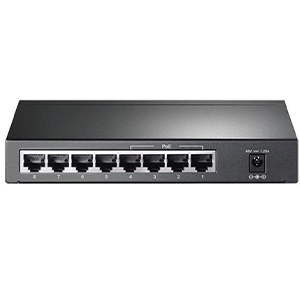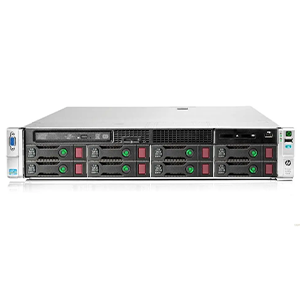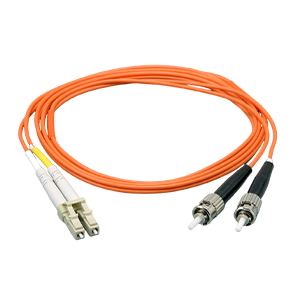Optical amplifiers play an important role in optical communications. This article will compare the main differences between Raman amplifiers and EDFA (erbium-doped fiber amplifiers). We will first explain the physical mechanism of Raman amplification and explain the main features and advantages of Raman amplifiers. Next, we will explain the working principle and structure of EDFA and introduce the main features and advantages of EDFA.
Subsequently, we will deeply compare the differences between Raman amplifiers and EDFA in terms of operating wavelength range, signal gain characteristics, power consumption and heat dissipation, noise characteristics, linearity and dynamic range, as well as cost and reliability. We will analyze the impact of these differences on the performance and application of the two amplifiers. Finally, we will give suggestions on the reasonable selection of Raman amplifiers or EDFAs according to the needs of different application scenarios.
Basic principles and characteristics of Raman amplifiers
Raman amplifiers use the Raman scattering effect to amplify signal light. The basic principle is to use high-power pump light to excite vibration modes in optical fibers, thereby enhancing the intensity of signal light. Its characteristics include high gain, wide bandwidth and low noise, making it important for long-distance optical communications.
Physical mechanism of Raman amplification:
- Raman amplification is based on the stimulated Raman scattering effect produced by the interaction between light and phonons.
- When strong optical pump light propagates in the optical fiber, it interacts with the optical fiber molecules to generate phonons (sound waves).
- These phonons can exchange energy with the signal light, thereby amplifying the signal light.
Main features and advantages of Raman amplifiers:
(1) Broadband characteristics:
- Raman amplification can operate within the entire optical fiber communication wavelength window, including the C-band and L-band.
- This allows Raman amplifiers to amplify multiple communication channels simultaneously.
(2) Independent of fiber type:
- Raman amplification does not depend on the specific characteristics of the fiber and can be used for different types of fibers.
- This makes Raman amplifiers highly compatible and flexible.
(3) Low noise characteristics:
- Raman amplification has better noise characteristics than other amplifiers, such as EDFA, when the signal input power is low.
- This makes Raman amplifiers more advantageous in some noise-sensitive applications.
(4) Distributed amplification characteristics:
- Raman amplification can achieve distributed amplification throughout the entire fiber, rather than just in a certain section.
- This can significantly reduce the loss in the fiber and improve the system transmission performance.
(5) Easy to achieve wavelength selectivity:
- By adjusting the wavelength of the pump light, selective amplification of different signal wavelengths can be achieved.
- This facilitates the application of wavelength division multiplexing technology.
In general, Raman amplifiers are widely used in long-distance optical fiber communication systems due to their broadband, independence, low noise and other characteristics.
Basic principles and characteristics of EDFA (Erbium-doped fiber amplifier)
EDFA uses erbium-doped fiber to amplify optical signals. Its basic principle is to stimulate the electronic transition of erbium atoms in the erbium-doped optical fiber through pump light, thereby enhancing the signal light. The characteristics of EDFA include high gain, wide bandwidth, low noise and simple structure, which make it widely used in optical communication and optical networks.
Working principle and structure of EDFA:
Working principle:
- EDFA uses the excited state radiation transition of Er3+ ions in erbium-doped fiber to achieve light amplification.
- When Er3+ ions are excited to a high energy level by pump light, the signal light can stimulate these excited state ions to transition from a high energy level to a low energy level, thereby generating stimulated radiation and achieving light amplification.
Structural composition:
- It consists of erbium-doped fiber, pump light source, coupler and other components.
- Erbium-doped fiber is the core of EDFA and provides the amplification medium.
- The pump light source is usually a semiconductor pump laser, which provides energy for the erbium-doped fiber.
- The coupler is used to couple the pump light and signal light into the erbium-doped fiber.
Main features and advantages of EDFA:
(1) High gain:
- EDFA can provide a high gain of 20-30dB to meet the amplification requirements of long-distance transmission.
(2) Low noise characteristics:
- EDFA has a low noise coefficient, within the range of 1.5-2dB, which is conducive to ensuring signal quality.
(3) Broadband:
- EDFA operates in the C band and L band and can amplify multiple wavelength division channels.
(4) High power output:
- High power EDFA can output more than 1W of optical output power.
(5) Easy to integrate:
- EDFA adopts optical fiber device structure and is easy to integrate with other optical fiber devices.
(6) High reliability:
- Erbium-doped fiber and semiconductor pump devices have good stability, and EDFA has good reliability.
In general, EDFA is widely used in optical fiber communication due to its excellent amplification performance and reliability, and is an important optical amplifier device.
Main differences between Raman amplifiers and EDFA
The main difference between Raman amplifiers and erbium-doped fiber amplifiers (EDFA) lies in their working principles and application ranges. Raman amplifiers enhance signals in optical fibers through the Raman scattering effect and are suitable for long-distance communications; EDFAs use laser energy in erbium-doped optical fibers to amplify signals and are widely used in optical fiber communication systems. The two differ in gain characteristics and frequency bands.
Operating wavelength range:
- Raman amplifiers can operate in the entire optical fiber communication wavelength window (C-band and L-band).
- EDFAs mainly operate in the C-band and L-band, with a relatively narrow wavelength range.
- Raman amplifiers have a wider wavelength selectivity and application flexibility.
Signal gain characteristics:
- The gain curve of Raman amplifiers is relatively flat, which is suitable for amplifying multi-wavelength signals.
- The gain curve of EDFA is relatively uneven, and the gain varies greatly with wavelength.
- The wavelength dependence of EDFA gain may require additional gain equalization measures.
Power consumption and heat dissipation:
- Raman amplifiers require high-power pump light sources, high power consumption, and require good heat dissipation design.
- EDFA has relatively low power consumption, and the heat is concentrated in the erbium-doped fiber segment, so the heat dissipation requirements are relatively simpler.
- High power consumption is an important issue that needs to be solved in the application of Raman amplifiers.
Noise characteristics:
- When the signal power is low, the noise characteristics of Raman amplifiers are better than EDFA.
- The noise factor of EDFA is generally 2-4dB, slightly higher than that of Raman amplifiers.
- Noise characteristics are a key indicator that needs to be weighed when choosing the type of amplifier.
Linearity and dynamic range:
- Raman amplifiers have better linearity and wider dynamic range.
- EDFAs are prone to saturation at high power, and their linearity and dynamic range are worse than Raman amplifiers.
- Raman amplifiers are more suitable for applications with higher power requirements.
Cost and reliability:
- EDFAs are generally cheaper to produce than Raman amplifiers, and they are more reliable.
- Raman amplifiers require high-power pump sources, which are relatively expensive and have slightly lower reliability.
- Cost and reliability are two other important factors to consider when choosing an amplifier.
In short, Raman amplifiers and EDFAs have their own characteristics, and they need to be weighed and selected according to specific needs when applied.
Applicable scenarios of Raman amplifiers and EDFAs
Raman amplifiers are suitable for ultra-long-distance optical fiber communication systems because they can provide uniform gain and reduce signal attenuation during optical fiber transmission. EDFA is commonly used in medium- and short-distance optical fiber communications and optical fiber amplifier systems because it can provide high gain, low noise, and has a wide gain bandwidth. Both are selected according to the needs and distance of the communication system.
Analyze the applicability of the two amplifiers based on application requirements:
Wavelength coverage:
- If full coverage amplification in the C-band and L-band is required, Raman amplifiers are more suitable.
- If only C-band or L-band amplification is required, EDFA may be a more economical choice.
Gain characteristic requirements:
- If flat gain characteristics are required, Raman amplifiers are more advantageous.
- For applications where the gain curve is not very sensitive, EDFA may be a simpler solution.
Power consumption and heat dissipation conditions:
- If the power consumption and heat dissipation requirements are high, EDFA may be a more ideal choice.
- In environments where power consumption and heat dissipation conditions are limited, the application of Raman amplifiers may be limited.
Noise performance requirements:
- If the noise characteristics are required to be high, Raman amplifiers may provide better performance.
- For applications where noise requirements are not very strict, EDFA may be a more cost-effective choice.
Linearity and dynamic range:
- If higher linearity and dynamic range are required, Raman amplifiers are more suitable.
- For applications where linearity and dynamic range requirements are not very high, EDFA may be a simpler choice.
Cost and reliability considerations:
- If cost and reliability are the primary considerations, EDFA may be a better choice.
- For applications with relatively low cost and reliability requirements, Raman amplifiers are also an option.
In general, when choosing between Raman amplifiers and EDFAs, it is necessary to weigh factors such as wavelength range, gain characteristics, power consumption, noise, linearity, etc. in combination with specific application requirements to find the most suitable solution.
Summary
Raman amplifiers and EDFAs are indispensable and important components in optical communication systems. Our company has long been focusing on the research and development and production of optical amplification technology and has rich practical experience. We provide various high-performance Raman amplifiers and EDFA products, which can be widely used in long-distance optical fiber communications, metro networks, and data center interconnection.
Whether your application scenario requires Raman amplification or EDFA, our team of engineers will provide you with professional selection guidance and integration services to ensure that the selected amplifier performs optimally in actual applications. Contact us now to learn more. We will do our best to provide you with the best quality products and solutions.
Raman Amplifiers and EDFA Amplifiers FAQ
A Raman amplifier is an optical amplifier that uses Raman scattering in a fiber to amplify optical signals. It relies on the interaction between a high-power pump laser and the signal light to achieve amplification.
An EDFA is an optical amplifier that uses erbium-doped fiber as the gain medium. It amplifies optical signals through stimulated emission of radiation when excited by a pump laser.
A Raman amplifier works by utilizing the nonlinear Raman scattering effect in a fiber. A pump laser injects high-power light into the fiber, which transfers energy to the signal light, thereby amplifying it.
An EDFA works by exciting erbium ions in a doped fiber with a pump laser. The excited erbium ions then transfer their energy to the signal light, amplifying it through stimulated emission.
Raman amplifiers offer wide wavelength coverage, flexible gain bandwidth, and the ability to be distributed along the fiber, which can improve signal quality and reach in long-haul optical networks.
EDFA amplifiers provide high gain, low noise figure, and excellent performance in the C-band (1530-1565 nm) and L-band (1565-1625 nm) of the optical spectrum, making them suitable for high-capacity telecommunications.
Raman amplifiers are used in long-haul and ultra-long-haul optical networks, wavelength division multiplexing (WDM) systems, and to extend the reach and capacity of fiber optic communication systems.
EDFA amplifiers are commonly used in telecommunications networks, data centers, optical amplification in WDM systems, and to boost signal strength in various fiber optic communication applications.
Raman amplifiers offer broad wavelength coverage and distributed amplification but require high-power pump lasers. EDFAs are known for high gain and low noise but are limited to specific wavelength ranges and require precise doping.
Key considerations include wavelength range, amplification requirements, system architecture, cost, and the specific needs of the network. Raman amplifiers are better for wide-band and long-distance applications, while EDFAs are ideal for high-performance applications in the C and L bands.




